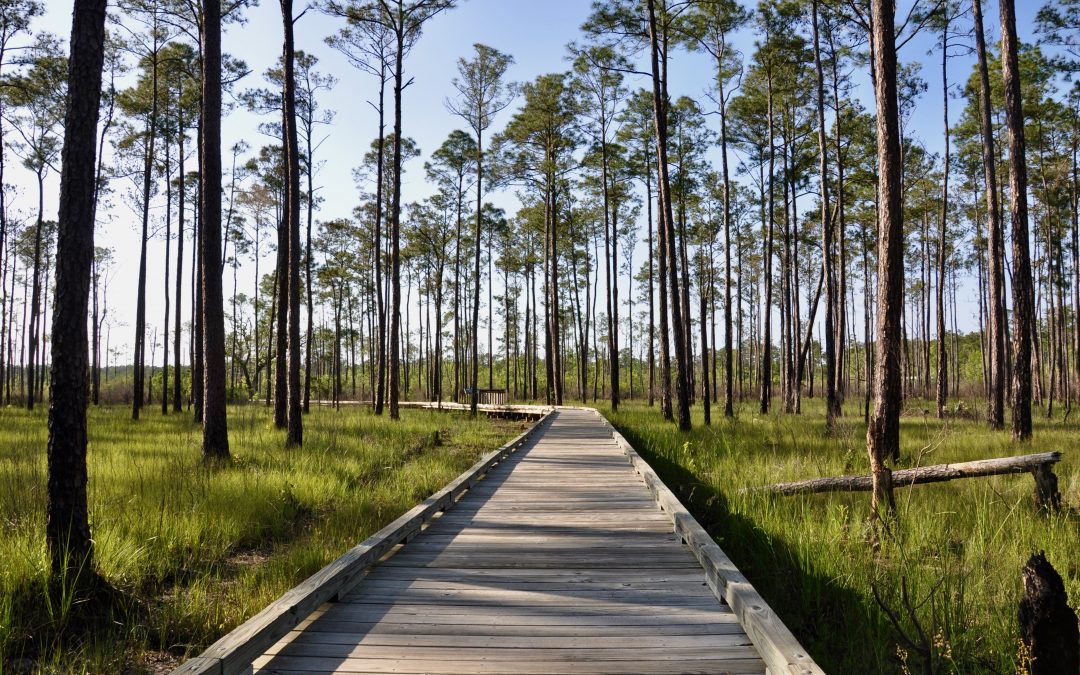
by admin | Sep 25, 2019 | Featured Posts, Greater Baton Rouge, Greater New Orleans, Most popular, North Louisiana
The words hiking and Louisiana don’t often go together. They certainly don’t conjure up images of rugged mountain trails past bubbling creeks. But if you know where to look, Louisiana offers a unique chance to get outdoors in a different way. Discover a boardwalk trail through a cypress swamp, a beautiful waterfall just over the state line or a taste of our “hill country.” Here are some of our favorite day hikes in Louisiana.
Jean Lafitte National Historical Park and Preserve and Wetland Trace
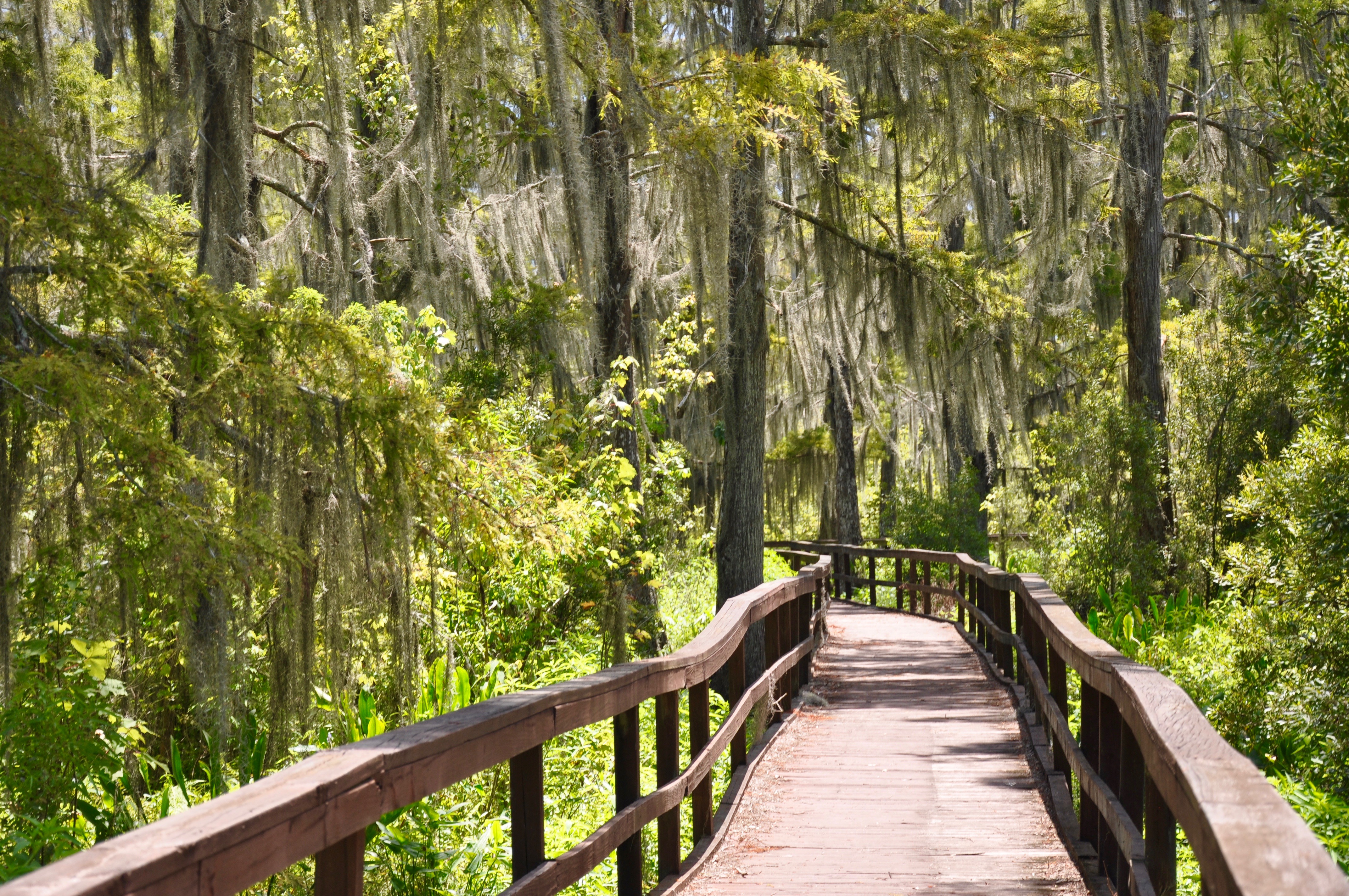
Jean Lafitte (both the park and the town) is about a half hour drive south of New Orleans. At the Barataria Preserve of Jean Lafitte National Historical Park and Preserve, walk through giant palmettos to the water’s edge, where frogs and alligators hide beneath the surface and banana spiders loom overhead. Take in another view of the swamp down the road at the Town of Jean Lafitte’s Wetland Trace. A little known gem, the trail is located behind the town’s Barataria Museum. Learn about the area’s most famous pirate – Jean Lafitte – before entering this quiet and secluded boardwalk. Look for blooming wild irises, six-foot-long snakes moseying along the boardwalk, or alligators peering silently out of the water.
Kisatchie National Forest
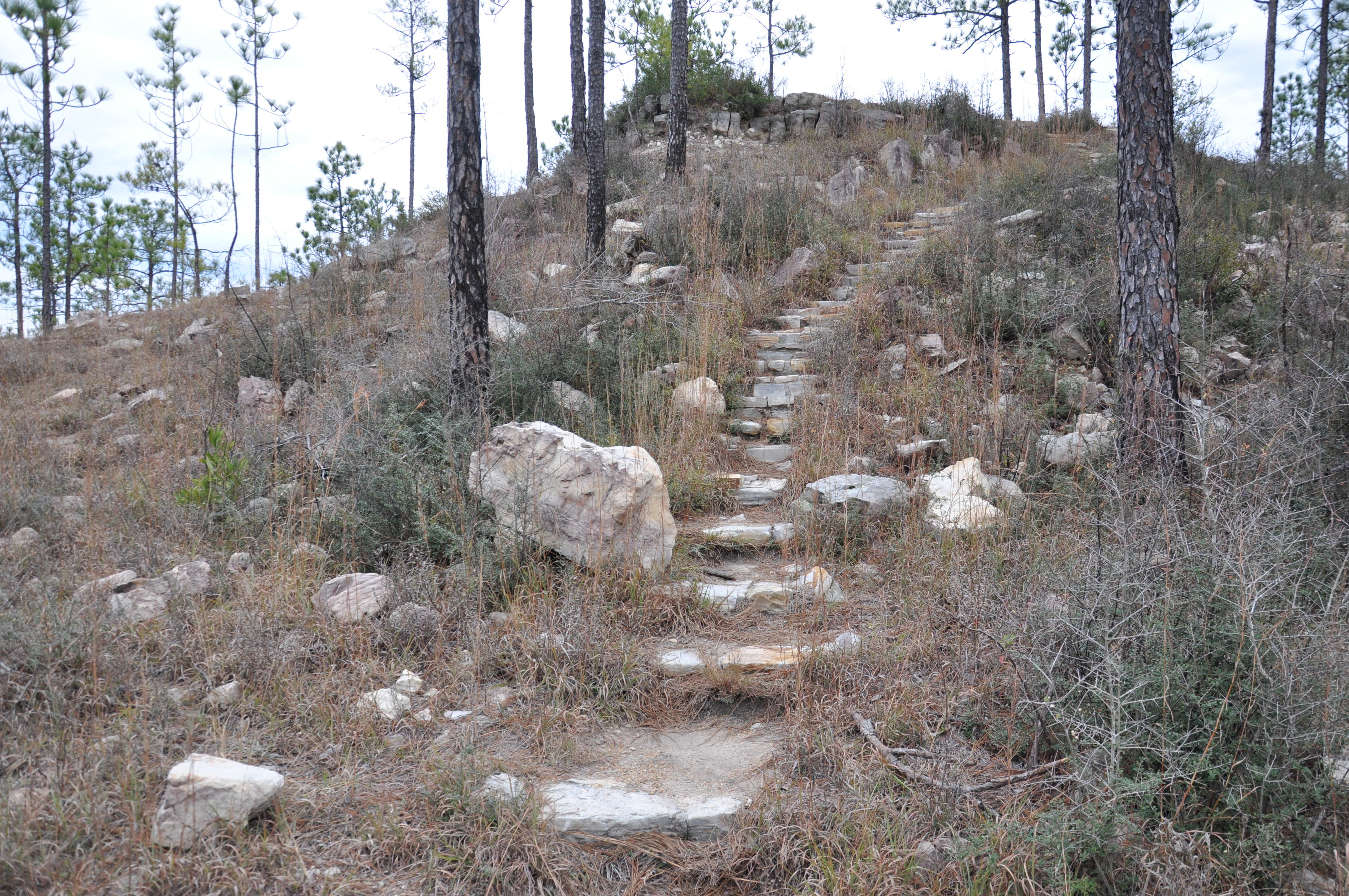 Any road trip north to Natchitoches should include a stop by Kisatchie National Forest. Divided into five districts, the forest offers an array of recreational opportunities – from hiking or biking to horseback riding or fishing. Choose from numerous trails, such as the 27-mile Wild Azalea Trail in the Calcasieu District–the longest trail in Louisiana. A perfect option for kids, though, is to drive the 17-mile Longleaf Scenic Byway and stop at the Longleaf Vista Interpretive Trail. A short stroll through bottomland hardwoods to a sandstone outcropping, the walk offers a seldom seen view of Louisiana’s “hill country.”
Any road trip north to Natchitoches should include a stop by Kisatchie National Forest. Divided into five districts, the forest offers an array of recreational opportunities – from hiking or biking to horseback riding or fishing. Choose from numerous trails, such as the 27-mile Wild Azalea Trail in the Calcasieu District–the longest trail in Louisiana. A perfect option for kids, though, is to drive the 17-mile Longleaf Scenic Byway and stop at the Longleaf Vista Interpretive Trail. A short stroll through bottomland hardwoods to a sandstone outcropping, the walk offers a seldom seen view of Louisiana’s “hill country.”
Clark Creek
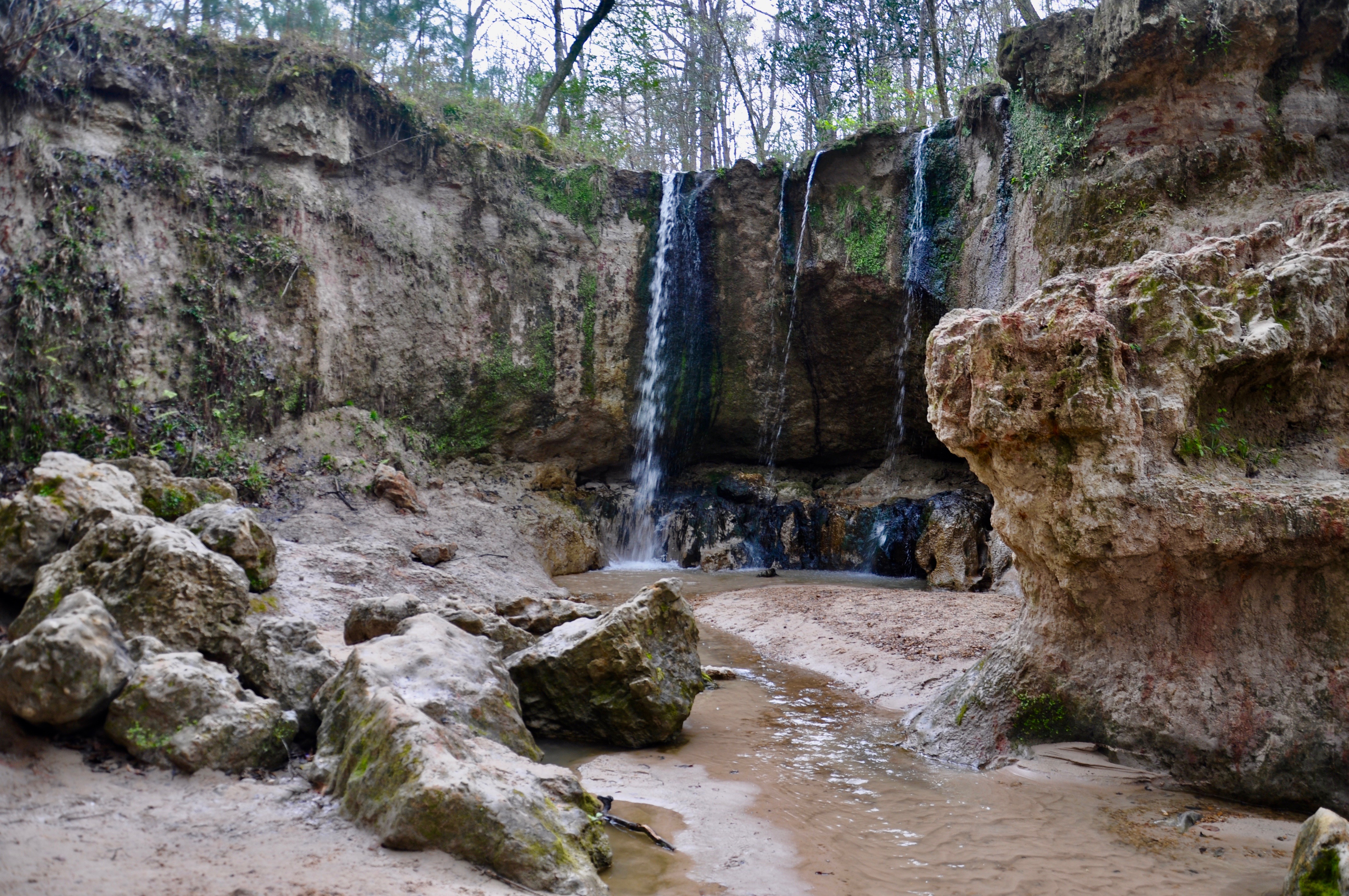 Technically in Mississippi, Clark Creek Natural Area is just across the border from St. Francisville. The trail begins along an excellent fossil hunting area and makes it way down to Clark Creek. Steep bluffs form the backdrop for the area’s waterfalls – a rare site in this part of the country. Spend the day here splashing through the creek and eating a picnic lunch by the waterfall. Be sure to carve out some time for a walk through picturesque St. Francisville on your way out.
Technically in Mississippi, Clark Creek Natural Area is just across the border from St. Francisville. The trail begins along an excellent fossil hunting area and makes it way down to Clark Creek. Steep bluffs form the backdrop for the area’s waterfalls – a rare site in this part of the country. Spend the day here splashing through the creek and eating a picnic lunch by the waterfall. Be sure to carve out some time for a walk through picturesque St. Francisville on your way out.
Big Branch Marsh National Wildlife Refuge
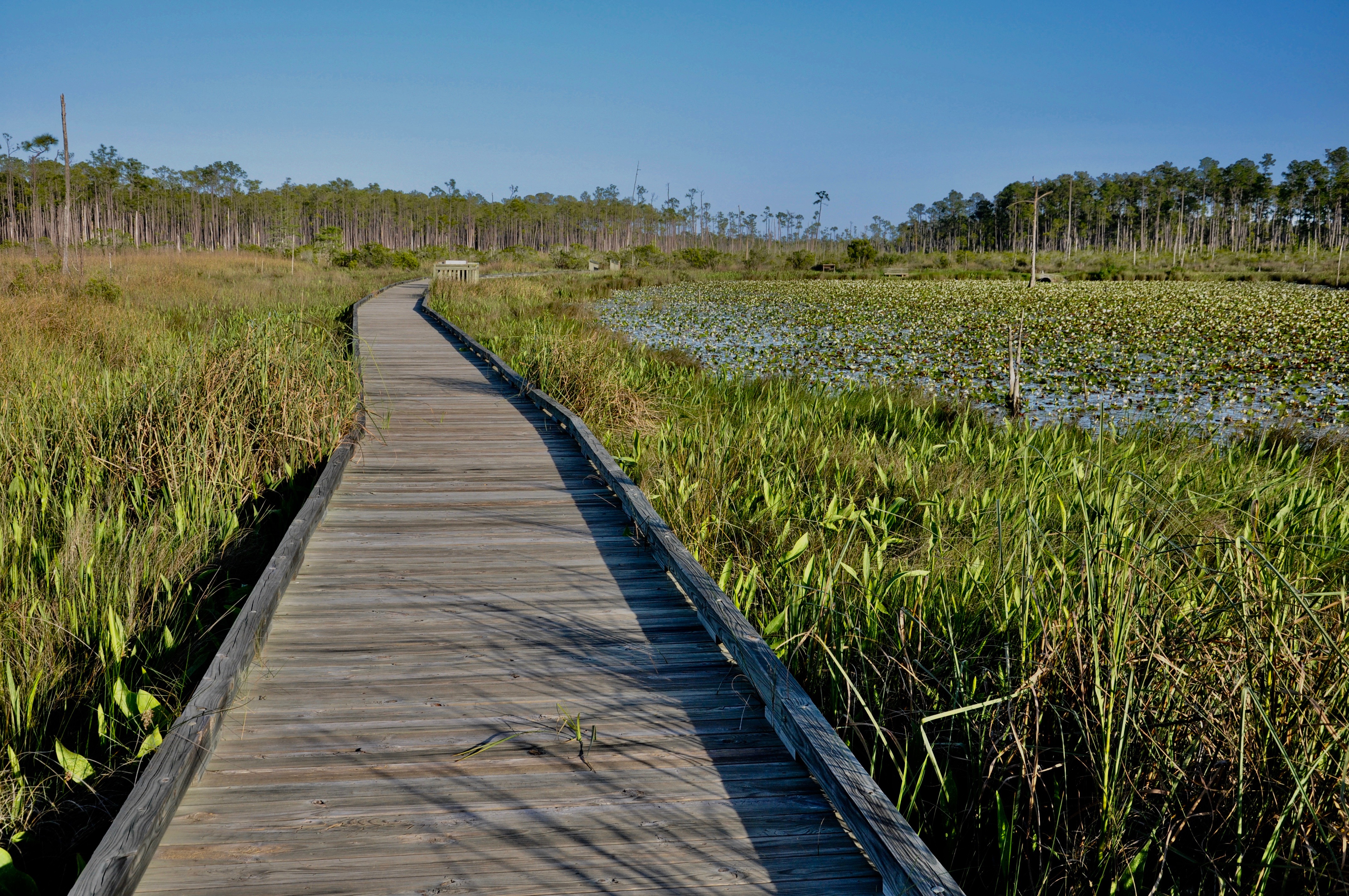
The Boy Scout Road trail at Big Branch Marsh National Wildlife Refuge takes you off the beaten path along Lake Pontchartrain’s northshore. Begin in a pine savannah leading to a half-mile interpretive trail along a boardwalk over a fresh mash. The trail then turns down a 2-mile, one-way gravel road known as Boy Scout Road. Walk through a forest to the edge of Bayou Lacombe. Years ago, schooners would sail here to carry locally made bricks across the lake to New Orleans. Don’t miss the Bayou Lacombe Visitor Center in Lacombe, featuring wildlife exhibits and trails through camellia, azalea and butterfly gardens.
Louisiana State Arboretum
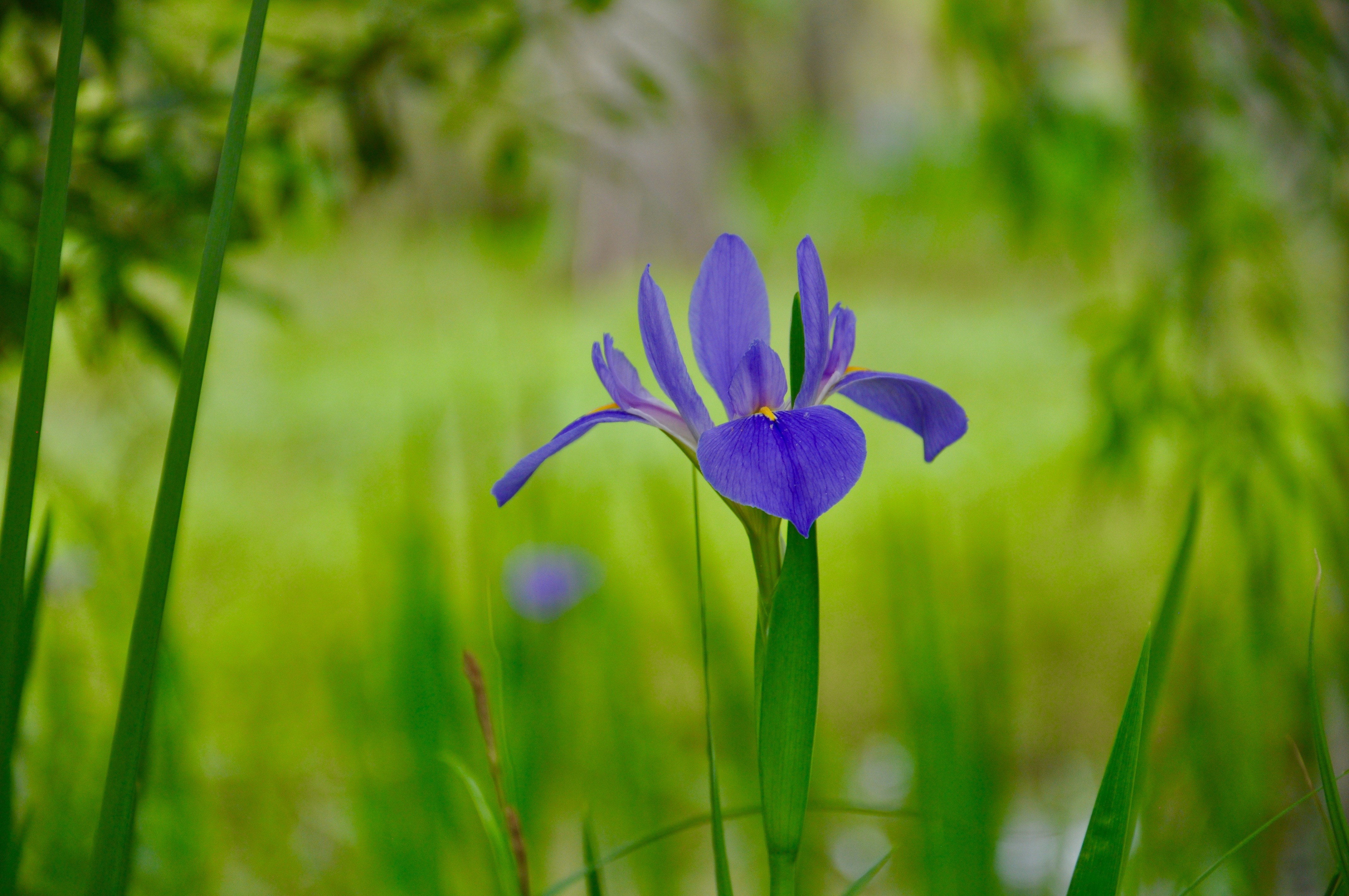
The 600-acre Arboretum came to fruition because of Louisiana naturalist Caroline Dormon. Located within Chicot State Park, the Arboretum features 6 miles of trails. The Walker Branch begins near Lake Chicot at the Nature Center. It ends near the Dormon Lodge, which has an exhibit to the noted naturalist. Several spur trails break off from the Walker Branch, leading to countless interpretive signs designating various species of trees. For the more adventurous, check out the 20-mile hiking trail around Lake Chicot.
This is actually just a tip of the list. Other hikes and walks we’ve discovered on our travels include the following:

by admin | May 15, 2013 | Cajun Country, Most popular
On one of the last cool weekends before summer, we jumped in the car to visit Avery Island, home to Tabasco as well as the beautiful oasis, Jungle Gardens. On previous trips, we always took I-10 from New Orleans to Breaux Bridge and then headed south. This time, however, we made our way along the southern route, traveling Highway 90 through Morgan City, Patterson and Franklin before reaching our destination.
 |
| Atchafalaya River as seen from Morgan City |
The drive brought us through scenic vistas of classic Louisiana swamps. While the kids watched “Ice Age” in the back of the car, we immersed ourselves in the abundant cypress trees basking in the dark waters prolific in this part of the state. Our first destination was Morgan City, sporting a slogan “Right in the Middle of Everywhere” and famous for its annual Shrimp and Petroleum Festival (the name says it all). On a map, Morgan City makes up half of an island surrounded by countless lakes, rivers, bayous and various other bodies of water twisting and turning around the floating land.
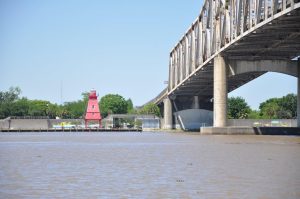 |
| Southwest Reef Lighthouse |
We headed straight for the historic downtown toward Front Street and the towering floodwall protecting the city from the Atchafalaya River. The road led us to an opening in the floodwall, and we parked at the edge of the river beside a handful of people fishing. The kids were elated to finally stretch their legs and set off at a sprint along the dock. We raced behind, taking in the muddy river and the boats tied up at its side. Before long, we ascended the stairs to the floodwall and looked down at the city below. Traffic was light on this Saturday morning, yet shops appeared to be opening in the historic buildings.
The floodwall gave us a great view of the river, and the three bridges spanning across it–one for trains and the other two for cars. One of them, the Long-Allen Bridge, boasted a pier resting on one of the deepest foundations in the world (176 feet below low water stage) when it was built in 1933. Across the river, a bright red lighthouse stared back at us. Known as Southwest Reef, the lighthouse was built in 1858 and relocated in 1987 from the Atchafalaya Bay to a park in Berwick.
 |
| Wedell-Williams Aviation and Cypress Sawmill Museum |
After our walk, we drove the streets admiring the buildings, churches and parks. It was a brief stay, though, as we had several other destinations for the day including the Louisiana State Museum in Patterson. The Wedell-Williams Aviation and Cypress Sawmill Museum showcases two very different occupations that were both integral to this small town.
On one side of the museum, brightly colored airplanes are scattered about both the floor and ceiling. In 1928, pilot Jimmie Wedell and oilman and timber baron Harry Williams joined forces to design aircrafts in Patterson that were faster than the competition. At the announcement of the movie, we all grabbed a seat and waited for the multiple screens to lower across the room. The kids were wide-eyed as planes raced from screen to screen and simulated wind blew in our faces. Wedell and Williams were daredevils of their time who used their fearless talents to revolutionize the aviation industry.
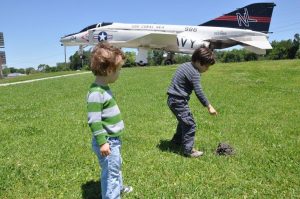 |
| The fascinating crawfish home in front of the museum |
Across the lobby, the cypress sawmill museum tells the industry’s story through pictures, giant logs and, if possible, even larger saws. Louisiana played a critical role in the country’s logging industry, and at one time, Patterson was home to the largest sawmill in the world. It was both amazing and eye-opening, and exactly the right size for the attention spans of our kiddos. We had just wrapped up our tour when they scooted out the front door to investigate the crawfish homes on the front lawn, oblivious to the jet mounted just above their heads.
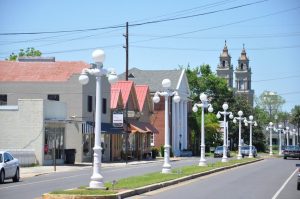 |
| Franklin’s Historic District |
Down the road in Franklin, we took a whirlwind tour of the downtown, which boasts over 400 historic structures. I have to say I have never seen so many historic signs all standing in one place. We immensely enjoyed the scenic main street, filled with shops and picturesque light poles. Spanning out on either side were pristine white mansions, shrouded in a canopy of moss-covered live oaks. One block away, the much-talked-about Bayou Teche flows past the homes, adding to the laid back, Southern feel already emanating from the town.
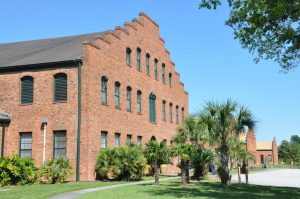 |
| Tabasco Factory at Avery Island |
It was nearly 3 o’clock by the time we arrived at Avery Island, paying our dollar toll to cross the bridge to enter Tabasco territory. Home to the McIlhenny hot sauce empire, Avery Island sits on one of five salt domes found in this part of Louisiana. They say that the salt here is “as deep as Mount Everest is tall,” a mind boggling thought. The factory was closed the day we visited, but we were still able to tour the facility that strongly smelled of the spicy sauce. The kids were thrilled when the tour guide gave them samples of miniature Tabasco bottles, which have now taken a spot of fame in their own collections at home.
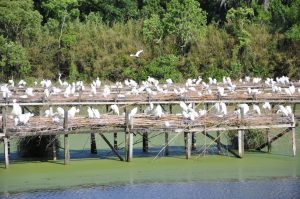 |
| Snowy Egrets at Jungle Gardens |
Aside from Tabasco, Avery Island is home to the wild and beautiful Jungle Gardens. A driving tour through the 170-acre gardens brought us past alligator-filled ponds, an 800-year-old Buddha and countless live oaks, azaleas, camellias and bamboo. Thankfully, the unseasonably cool weather kept the mosquitoes at bay so we could enjoy exploring every inch of the property. It was also the perfect time of year for the nesting snowy egrets, which came in droves to the elevated platforms known as “Bird City.”
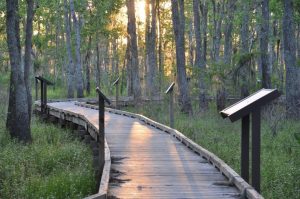 |
| Bayou Teche National Wildlife Refuge |
All in all, it was probably one of our most successful adventures already, but we added one final stop to complete the tour. On the return drive, we veered off south of Centerville to enter the Bayou Teche National Wildlife Refuge, established in part to protect Louisiana’s black bear population. While we weren’t looking for bears, we were intrigued by the Garden City boardwalk trail, which we never would have found without this map. We parked by the levee and walked the short distance to an even shorter boardwalk through the swamp. The water underneath was eerily still, clogged with vegetation in this thriving forest; yet the trees overhead were alive with songbirds, each twilling a different tune and flitting about from branch to branch in a blur of colors. We paused a moment to admire them all before climbing back in the car for the return trip home.
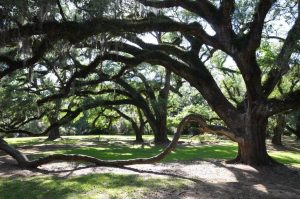 |
| Live oaks at Avery Island’s Jungle Gardens |
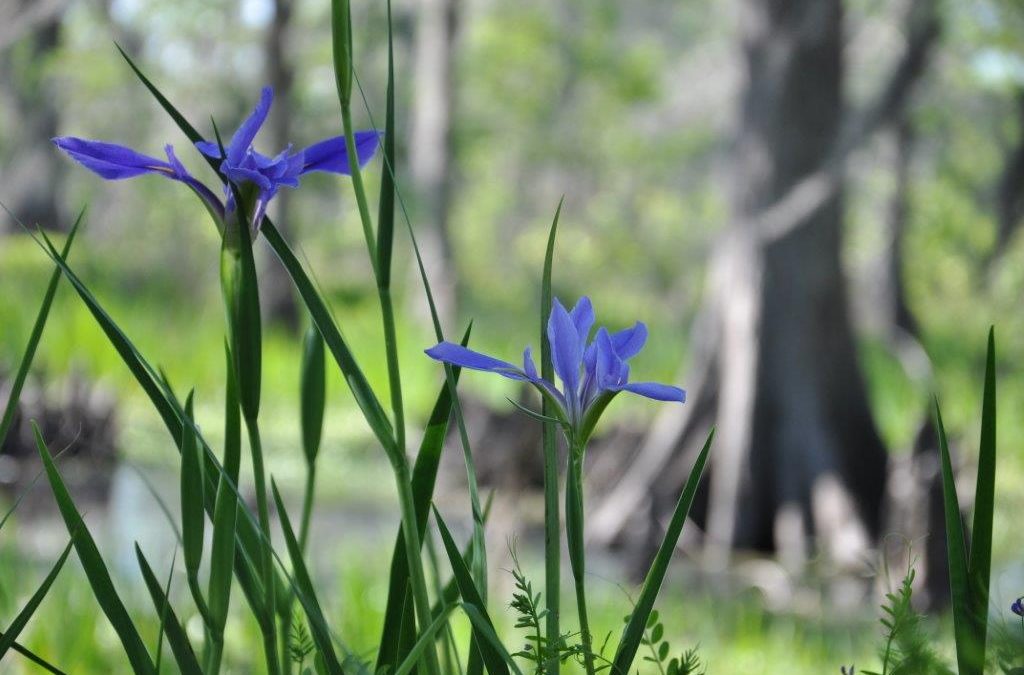
by admin | Apr 9, 2013 | Greater New Orleans, Most popular
We’ve been on a kick lately traveling to the end of all the roads in Louisiana–first in Plaquemines, then St. Bernard and now Jefferson via the Town of Jean Lafitte. It’s altogether quite a different drive than the other two, most notably because we didn’t seem to pass any refineries along the way–or at least any we could see.
 |
| Hope Haven |
The adventure began when we exited the Westbank Expressway in Marrero and turned on to Barataria Boulevard. Almost immediately, we were met with some of the most striking architecture in Jefferson Parish. Built in the 1920s and 30s, Hope Haven’s Spanish Colonial Revival-style buildings stand out amid this otherwise typical suburban area. From my Internet searches, it appears the impressive buildings house a school and a case management and family support center run by Catholic Charities, but they are grand enough to rival the Spanish missions found in Texas and California.
 |
| The water-filled, historic Town of Jean Lafitte |
Continuing south, we made a left on Leo Kerner Parkway and entered a long stretch of uninhabited highway. Both this route and Barataria Blvd. lead to Jean Lafitte National Historical Park and Preserve, one of our favorite spots to explore the swamps and a place I’ve written a lot about in the past. This weekend, however, we had a new destination, passing by the park’s entrance and ascending the high bridge over the Intracoastal Waterway. As the road descends, a pirate ship rocking on the high seas announces you’ve entered the historic town of Jean Lafitte.
We followed scenic Jean Lafitte Boulevard along Bayou Barataria, noting that the majority of the elevated houses here seem to be permanent homes to the town’s residents rather than secondary fishing camps. Our first stop was the new Lafitte’s Barataria Museum and Wetland Trace, which celebrated its grand opening on Saturday. A large tent out front indicated the celebration, and the kids were shouting “balloons!” before we left the car. While they ransacked the kids’ table, gathering up stickers, coloring books, pirate bandanas and tattoos, Paul and I eyed the free tastings of alligator-stuffed mushrooms and crab cakes. In hopes of relaxing and enjoying the live Cajun music, we set up our folding chairs in front of Bruce Daigrepont and his band, yet the kids had sat long enough in the car and were not remotely interested in relaxation.
.jpg) |
| Lafitte’s Barataria Museum |
So we herded them into the museum, where a half hour movie introduced us to the town’s history and that of its residents. Beautiful aerial shots showed the village surrounded by its lifeblood of water, swamp and marsh, and one resident drove the message home by saying he never knew there was solid land until he was taken to the French Quarter when he was 14. The town itself takes its name from the notorious pirate Jean Lafitte, who used the mysterious swamps to hide his smuggling operations. Today’s residents aren’t quite as scandalous, yet those we met were perhaps just as entertaining and lively.
The museum, although small, is packed with intriguing items from the area, from an entire display of the animals found here to a gun used by one of Lafitte’s pirates during the Battle of New Orleans. Although 2-year-old August buried his face when confronted with the talking alligator, the other children present got a kick out the reptile. Unfortunately, two among us didn’t have the patience for the oral history presentations, so we skipped that section to instead head out back to the Wetland Trace.
 |
| Alligator along the Wetland Trace |
Nearly a mile long, this boardwalk trail through the swamp caught our 5-year-old’s attention like nothing else that day. We spent an hour and half stalking snakes and lizards, pointing out alligators to others passing by and trying to determine what and where all that clicking noise was (our best guesses were baby birds in the rookery or click beetles taunting us from the trees). Although the lines were too long for us to join the swamp tour leaving the docks off the back of the boardwalk, the entire mission was still a success as we saw five snakes of varying sizes and colors, countless water turtles and one very close alligator. Plus, now we have something more to go back for next time.
 |
| Boat ready for a new paint job |
Back in the car, Charles begged to continue down the road as he wasn’t ready to go home yet, so we kept driving to see what else we could find. On our way to the museum, we had passed an old plantation, still standing but fighting a losing battle with the elements and weeds threatening to suck it back into the earth. Now, on our left, an old boat was lifted on barrels, preparing for an overhaul from its owner.
At the museum, we had learned that Lafitte is home to 11 cemeteries. Fleming Cemetery, notable for its white-washed tombs on top of an Indian mound, is privately owned and inaccessible to the public, yet can be seen from the water and is a highlight of area boat tours. Another, Lafitte Cemetery, is said to be the burial grounds of Pirate Jean Lafitte himself. This was our last photo op before the main road branched off into smaller outlets and essentially ended at a busy boat ramp bustling with fishermen.
 |
| Legend says this is the burial grounds of Pirate Jean Lafitte |
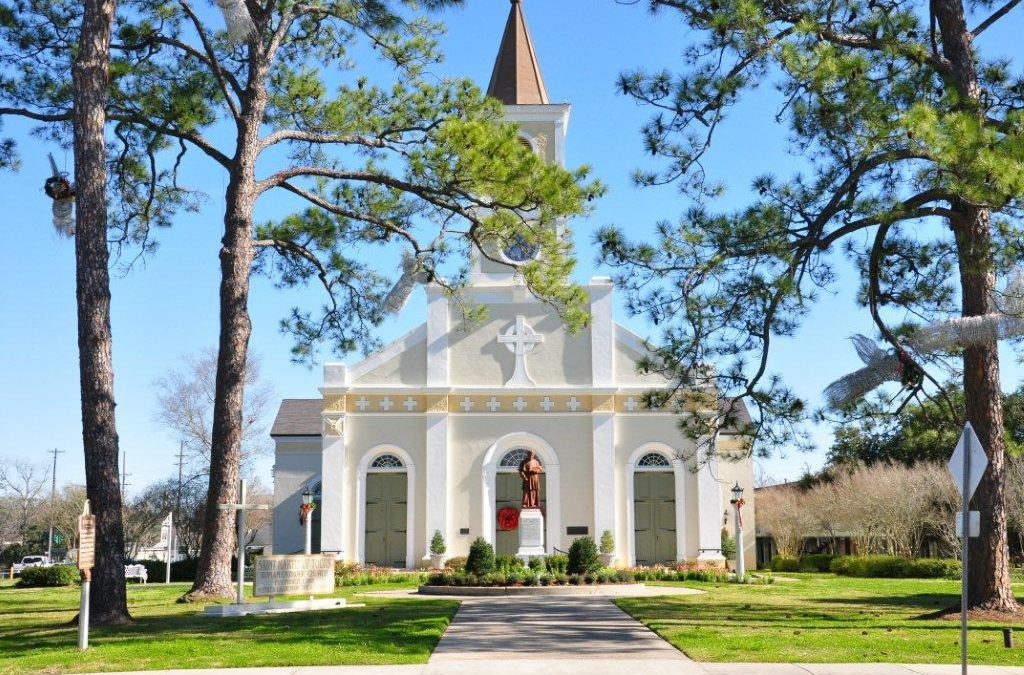
by admin | Jan 18, 2012 | Cajun Country, Most popular
On the eastern edge of Lafayette, a circle of roads connects the historic town of St. Martinville with picturesque Lake Fausse Pointe. This was our weekend destination, and we launched the adventure from the Crawfish Capitol of the World – Breaux Bridge. As we passed under the bridge and over Bayou Teche, the kids jolted from their naps and began fidgeting with anticipation.
 |
| Evangeline Oak in St. Martinville |
The sleepy downtown was filled with antique stores and the promise of amazing treasures, but one glance at the wild-eyed kiddos in back, and we continued south through the countryside to the equally charming town of St. Martinville. As Charles catapulted from the car, he was stopped in his tracks by our friend who had followed along on the trip. Shaking off his momentary confusion, he pulled her along in his quest for new discoveries in Louisiana’s third oldest town.
 |
| St. Martin de Tours Catholic Church in St. Martinville |
The ample grounds of St. Martin de Tours Catholic Church was the perfect location for running off some energy and adding to our rapidly growing collection of twigs. A man removing Christmas decorations drew us to the church’s front doors, and we ducked under his ladder to enter “the Mother Church of the Acadians” – descendants of the French colonists forced out of Nova Scotia during the French and Indian War. The strong smell of incense lingered in the air inside, encircling us as we toured the gated pews and colorful patterns reflecting on the floor from the stained-glass windows.
 |
| Le Petit Paris Cafe |
Before we could go any farther, we crossed the street for burgers and fries at Le Petit Paris Cafe. We were the only patrons in the quaint restaurant, which gave the kids free reign to squeal and play to their delight. The rest of the historic buildings are centered around the church, and we strolled past the Duchamp Opera House and La Maison Duchamp on our way to Bayou Teche and the Evangeline Oak. Immortalized by Longfellow’s poem “Evangeline,” the ancient oak is one of the most photographed spots in the state.
 |
| Cypress trees in Lake Fausse Pointe State Park |
From St. Martinville, we headed out Catahoula Highway past an intriguing oak and pine alley to the levee road that leads to Lake Fausse Pointe State Park. It was here that, after reuniting with some good friends and tearing both their children and ours away from the playground, we set off to discover nature. At one time part of the Atchafalaya Basin, the 6,000-acre park features both boardwalk and canoe trails through the watery home of alligators and bald cypress trees. Although the sounds of our nine-person group tromping through the forest scared away any signs of life, we couldn’t help but enjoy the fresh air and lovely scenery.
On the way out, we traveled the levee road back to I-10, where in the tiny town of Henderson, we enjoyed a seafood-filled dinner at Pat’s Fisherman Wharf. It was dark when we drove away with full bellies and memories of another Louisiana adventure.
 |
| Playing on a natural see-saw at Lake Fausse Pointe |
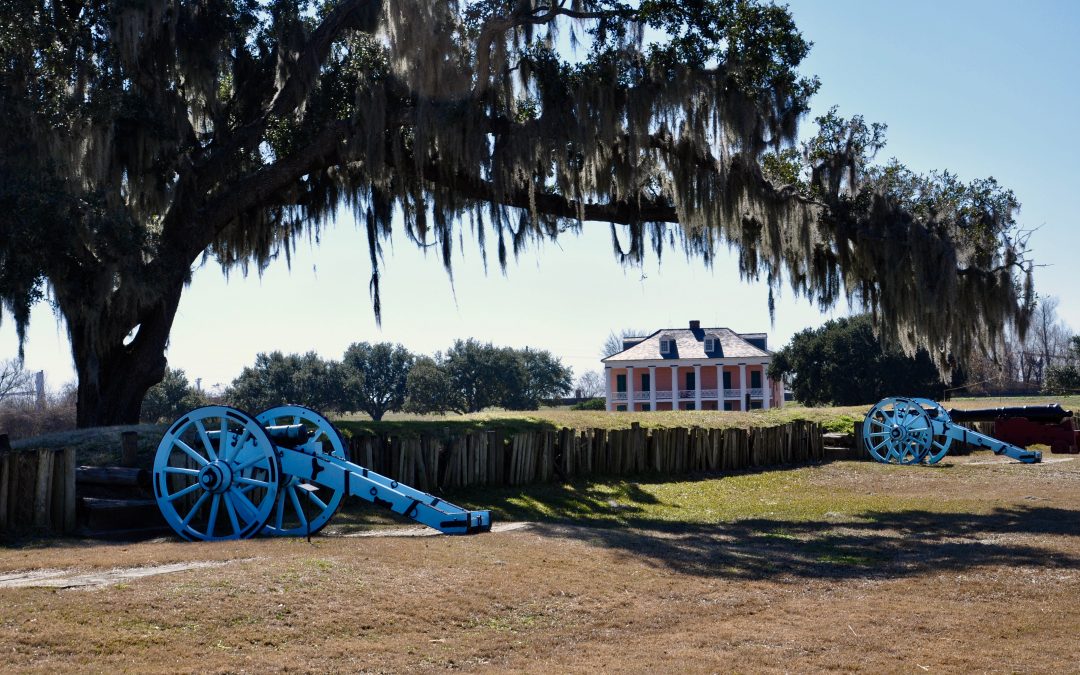
by admin | Mar 29, 2011 | Greater New Orleans, Most popular
Lured into St. Bernard Parish by a festival, we ended up staying late into the evening to see plantations, a battlefield and chickens. That’s right, chickens kept us out way past nap time. But I digress. It all started when I saw the newspaper article about the Los Islenos Festival. Having skipped it the last two years, I was determined to go. So we called a friend who lived in “The Parish,” as St. Bernardians call their beloved home, and made plans to meet up with her there.
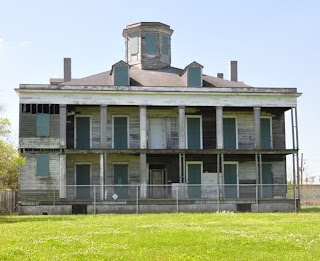 |
| LeBeau Plantation |
Driving along the back end of the French Quarter, past Bywater and the Lower Ninth Ward, we had a short pit stop to see two plantations that, although within walking distance of each other, are as different as night and day. LeBeau Plantation’s boarded up remains stand eerily proud behind a deep, grass field and a chain link fence. The new roof is in curious contrast to the gaping holes in the wall, but the home lends itself to being photographed. Meanwhile, on the property of the Domino Sugar Plant, the stately Cavaroc mansion appears well-loved in its pristine state. A word to the wise, though, snapping a picture of this beauty will earn you the disdain of the Domino Sugar guards, who descended upon our car, scrawling down our name and license plate number like we were suspected terrorists.
 |
| Chalmette Battlefield |
Fleeing the scene of the crime, we continued on to Chalmette Battlefield, which marks the site of the Battle of New Orleans where General Andrew Jackson and his ragtag group of American troops held off the British attack during the final struggle of the War of 1812. Beginning in the newly built visitor’s center, we pressed the button to start the video while I mentally calculated how long I had before having to take off in a chase after Charles. Amazingly, the moving lights of an accompanying diorama kept his attention, and for the first time in years, we were able to see an entire movie. In the end, I broke his attention and dragged him away to look at a large drum so he didn’t see the final results of the war graphically displayed across the screen.
Back outside, he proudly waved his miniature American flag while we led him toward the oddly small Beauregard Plantation, built on the property in 1840. After posing for family pictures in front of our pretend home, we explored the empty rooms inside. The temperature dropped remarkably when we stepped onto the marble floors and felt the cool breeze blowing across the open, facing doors in every room. August lazily watched Charles racing through the house, while I stopped the toddler in his tracks by pointing out a “secret” door to the attic. Little did I know that the door would become the primary topic of discussion for the rest of the day, leading to elaborate stories about a six-armed green monster locked away by the superhero Batman.
The plantation sits on the edge of the Mississippi River levee, and after a quick climb up the steps, we were delighted to catch a glimpse of the Creole Queen paddlewheeler floating by. Another top attraction at the site is the multitudes of crawfish chimneys lining the path to the cannons. Charles was fascinated with peering inside, desperately trying to see the crawfish at the bottom.
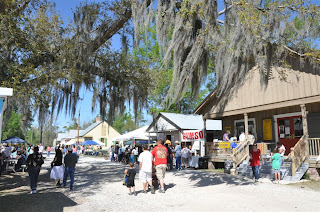 |
| Los Islenos Festival |
Now starving, we made a beeline down the San Bernardo Scenic Byway, passing under an avenue of live oak trees flanking the roadway, to the food booths at the Los Islenos Festival. Advertised as “A celebration of Louisiana’s Spanish Heritage,” the festival paid tribute to the Canary Islanders who settled in the region in the 1700s. Along with Spanish food, music and dancing, we found local craft booths and spacewalks scattered throughout the Los Islenos Historic Village. After refueling on paella and sangria, we explored the museum-quality homes and their endless contribution of “secret doors.”
We enjoyed a few moments of rest while listening to the large group of Spanish singers on stage before packing everyone up and heading home. One last detour was meant to be a quick in and out picture of the Sebastopol Plantation. Being a private residence, we were surprised to see a sign advertising free tours from noon to 4 p.m. Not only is it a rare event to stumble upon free entrance into a plantation, it is even more amazing that at 4:30 p.m., the owner and curator, Alberta Lewis, saw us stop our car and came to offer us a tour past closing time.
 |
| Sebastopol Plantation |
Charles, August and I made it almost through the history of the first room before having to go outside and spare the house from damage. While Paul was given a guided presentation of the 180-year-old house, the kids and I met a friend of the owner who engaged Charles in picking up pecans across the expansive yard. He then led us to the chicken coop, where roosters, chickens and two peacocks strutted all around our feet. We left carrying a basket of pecans, half a carton of fresh eggs and a lasting memory of the generosity of two St. Bernardians (one of whom also happened to be the talented artist behind Haydel’s king cake dolls).


 Any road trip north to Natchitoches should include a stop by Kisatchie National Forest. Divided into five districts, the forest offers an array of recreational opportunities – from hiking or biking to horseback riding or fishing. Choose from numerous trails, such as the 27-mile Wild Azalea Trail in the Calcasieu District–the longest trail in Louisiana. A perfect option for kids, though, is to drive the 17-mile Longleaf Scenic Byway and stop at the Longleaf Vista Interpretive Trail. A short stroll through bottomland hardwoods to a sandstone outcropping, the walk offers a seldom seen view of Louisiana’s “hill country.”
Any road trip north to Natchitoches should include a stop by Kisatchie National Forest. Divided into five districts, the forest offers an array of recreational opportunities – from hiking or biking to horseback riding or fishing. Choose from numerous trails, such as the 27-mile Wild Azalea Trail in the Calcasieu District–the longest trail in Louisiana. A perfect option for kids, though, is to drive the 17-mile Longleaf Scenic Byway and stop at the Longleaf Vista Interpretive Trail. A short stroll through bottomland hardwoods to a sandstone outcropping, the walk offers a seldom seen view of Louisiana’s “hill country.” Technically in Mississippi, Clark Creek Natural Area is just across the border from St. Francisville. The trail begins along an excellent fossil hunting area and makes it way down to Clark Creek. Steep bluffs form the backdrop for the area’s waterfalls – a rare site in this part of the country. Spend the day here splashing through the creek and eating a picnic lunch by the waterfall. Be sure to carve out some time for a walk through picturesque St. Francisville on your way out.
Technically in Mississippi, Clark Creek Natural Area is just across the border from St. Francisville. The trail begins along an excellent fossil hunting area and makes it way down to Clark Creek. Steep bluffs form the backdrop for the area’s waterfalls – a rare site in this part of the country. Spend the day here splashing through the creek and eating a picnic lunch by the waterfall. Be sure to carve out some time for a walk through picturesque St. Francisville on your way out.













.jpg)





